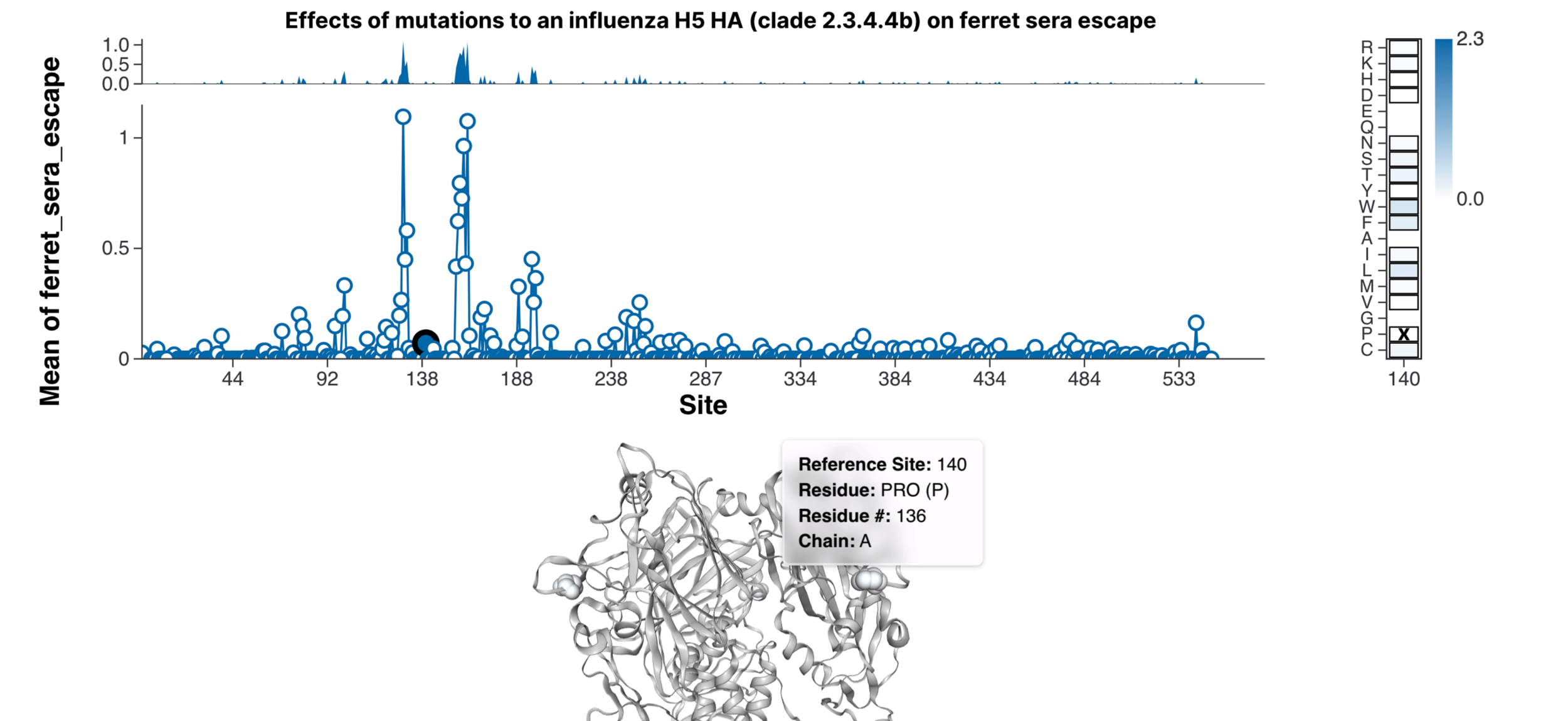Analysis of HA mutations in human case of H5 influenza from Missouri
Jesse Bloom
Fred Hutch Cancer Center / HHMI
CDC has released partial sequence of virus
CDC has released partial sequence of virus

Sequence covers all of HA except part of signal peptide and region encompassing HA1 - HA2 boundary. Mutations in this region unlikely to affect antigenicity or receptor-binding, but could affect HA stability. (Missing sites are 1 to 8 and 325 - 351 in sequential numbering; -6 to 2 and 312 to 335 in H3 numbering; -16 to 9 and 309 to 335 in mature H5 numbering).
Among the covered sites, there are four HA amino-acid mutations relative to the candidate vaccine virus (A/American Wigeon/South Carolina/22-000345-001/2021) and most dairy cattle H5 viruses (exemplified by A/cattle/TX/24-015973-008-original/2024)
I will focus on the new HA mutations not fixed in all dairy cattle viruses

A160T (a la A172T, A156T) is in a small minority of dairy cattle viruses, where it has arisen independently multiple times.
S140P (a la S152P, S136P) is only found in one dairy cattle virus and is otherwise unique
We know some HA molecular phenotypes relevant to pandemic risk / preparation

My lab has been studying how mutations affect these phenotypes using pseudovirus deep mutational scanning

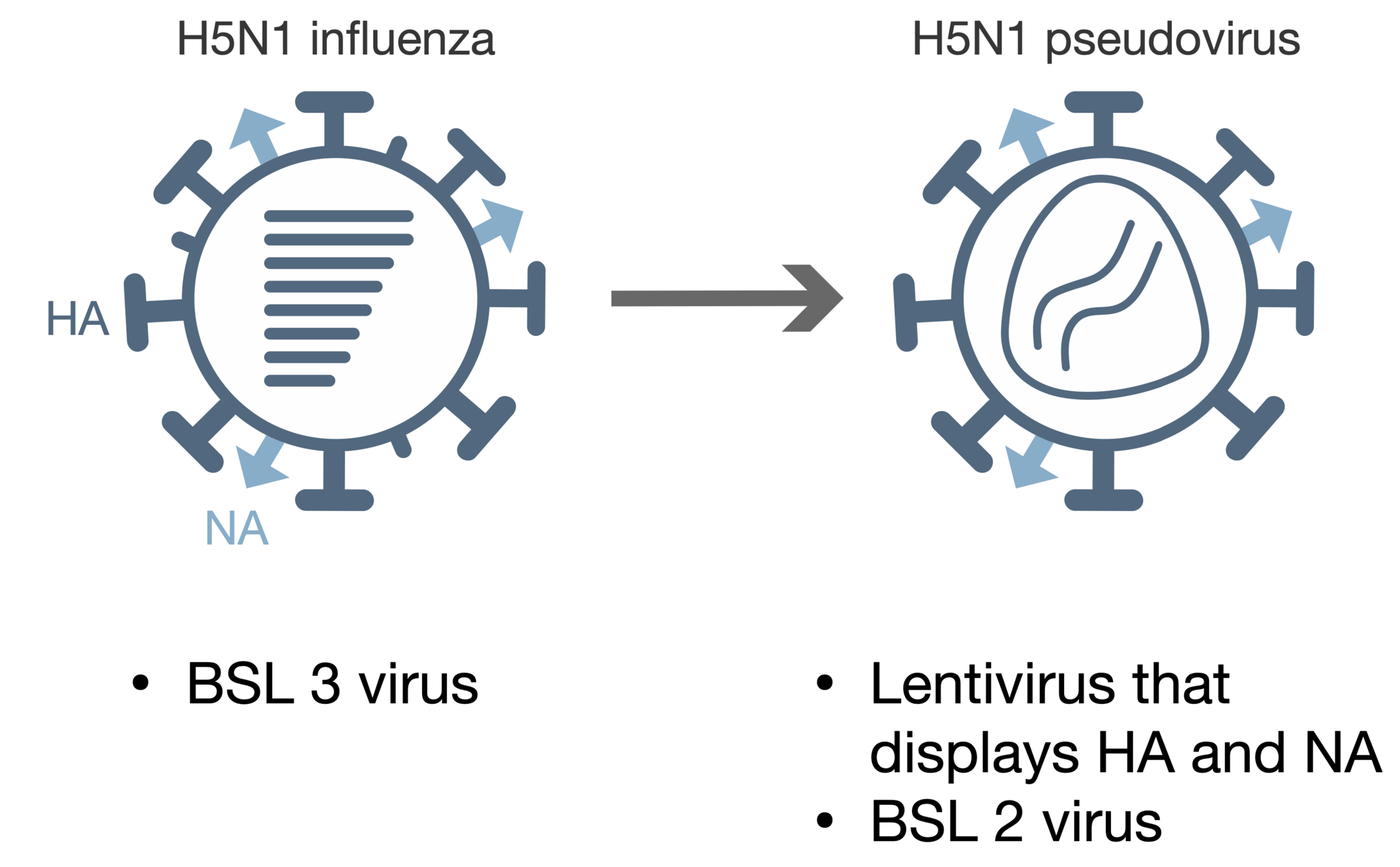
Pseudovirus to study all HA mutants

Pseudovirus to study all HA mutants
Library of all HA amino-acid mutations
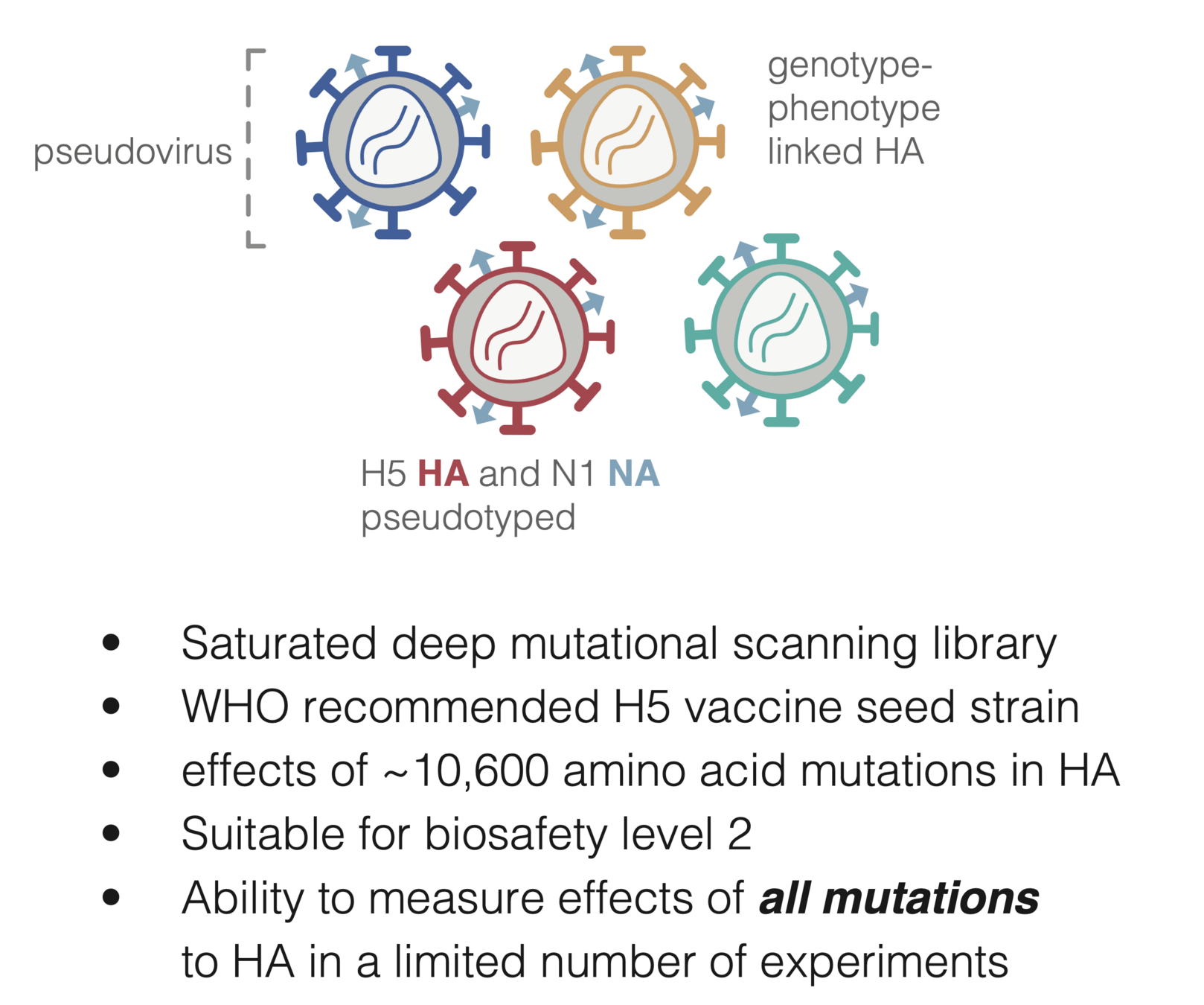
Deep mutational to measure how mutations affect antibody neutralization
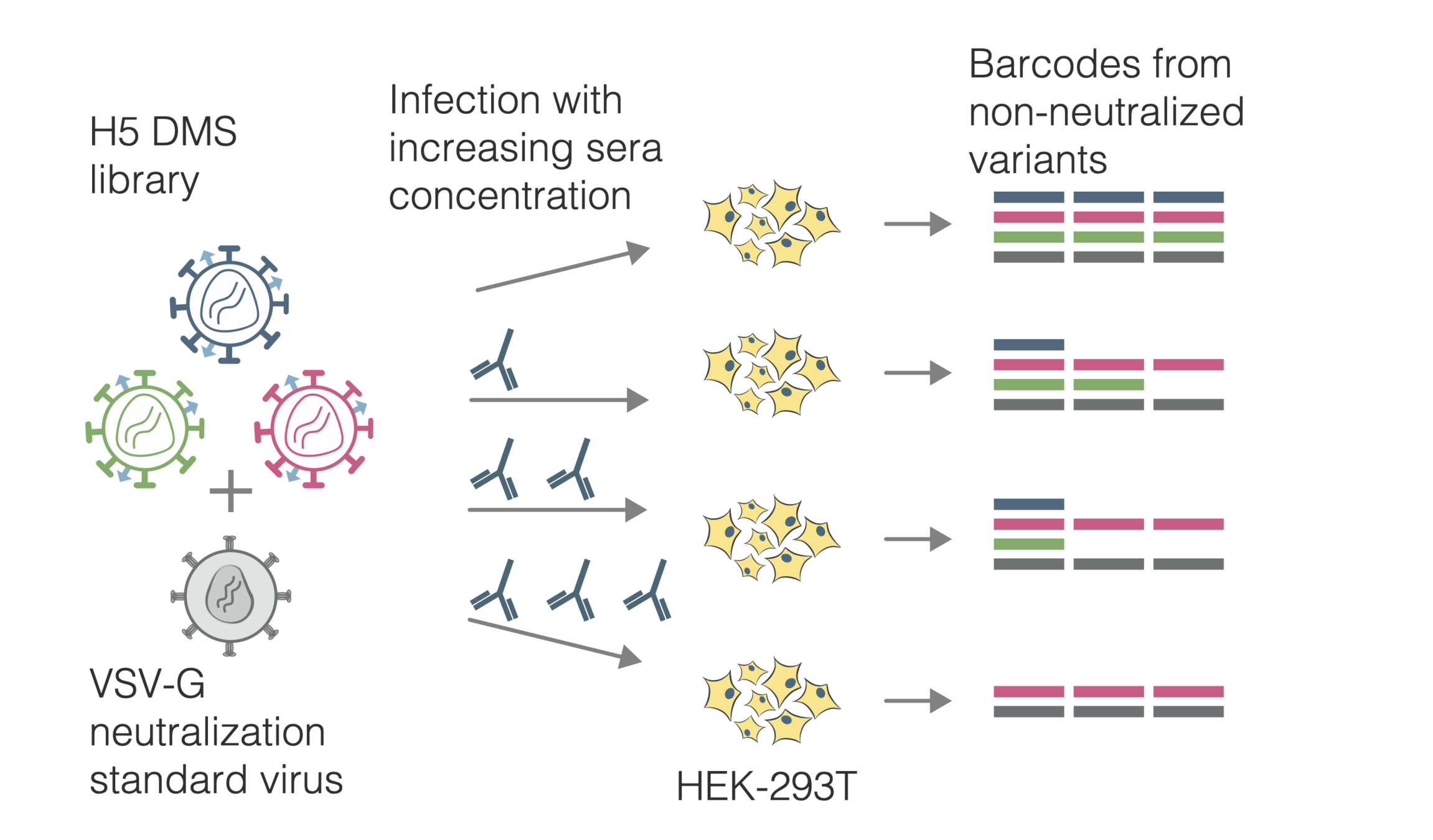
A160T (a la A172T, A156T) is present in a small fraction of cattle viruses where it has arisen independently several times
Deep mutational scanning shows that A160T (a la A172T, A156T) reduces neutralization by ferret and mouse sera from candidate vaccine viruses that lack that mutation
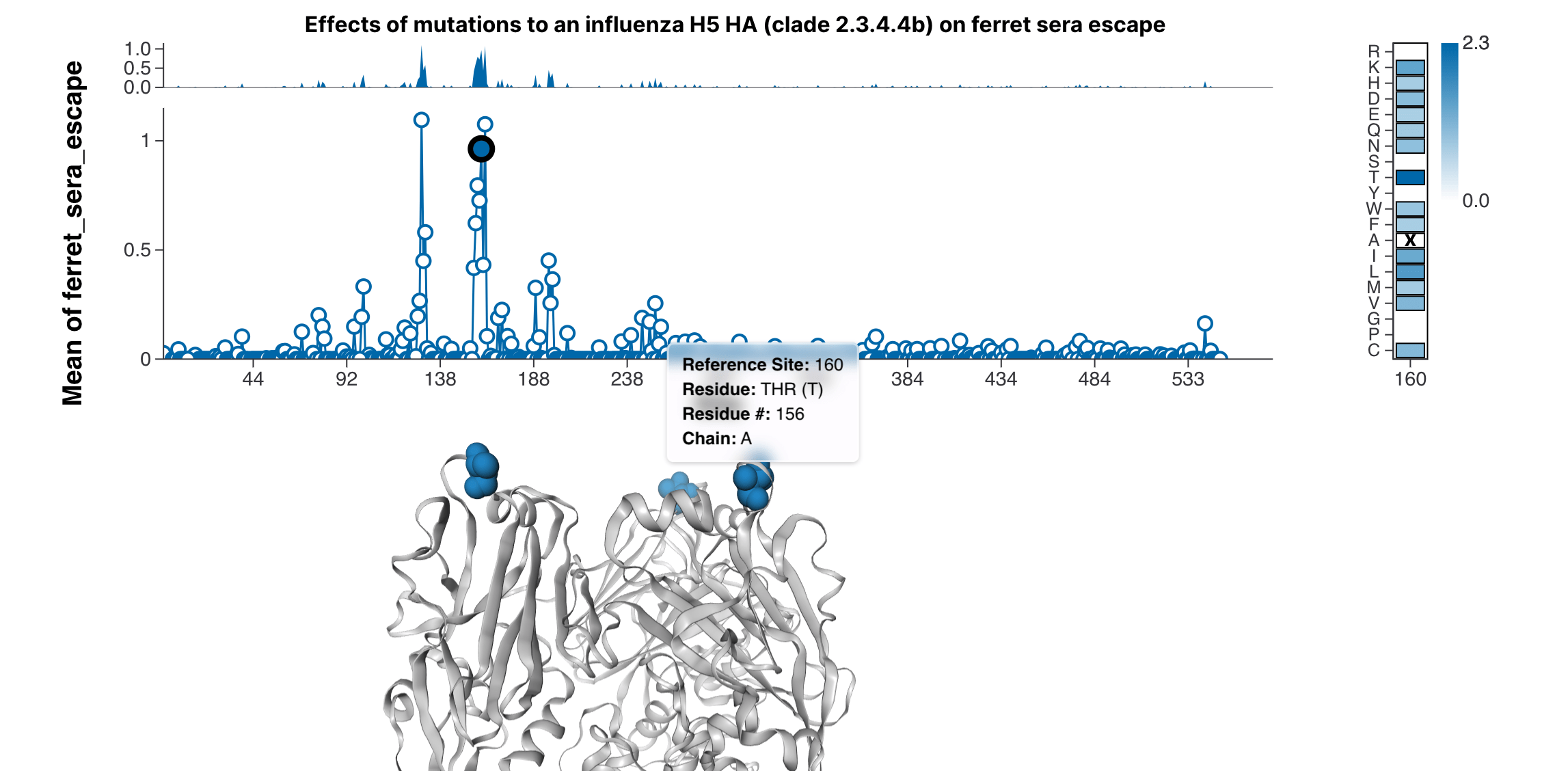
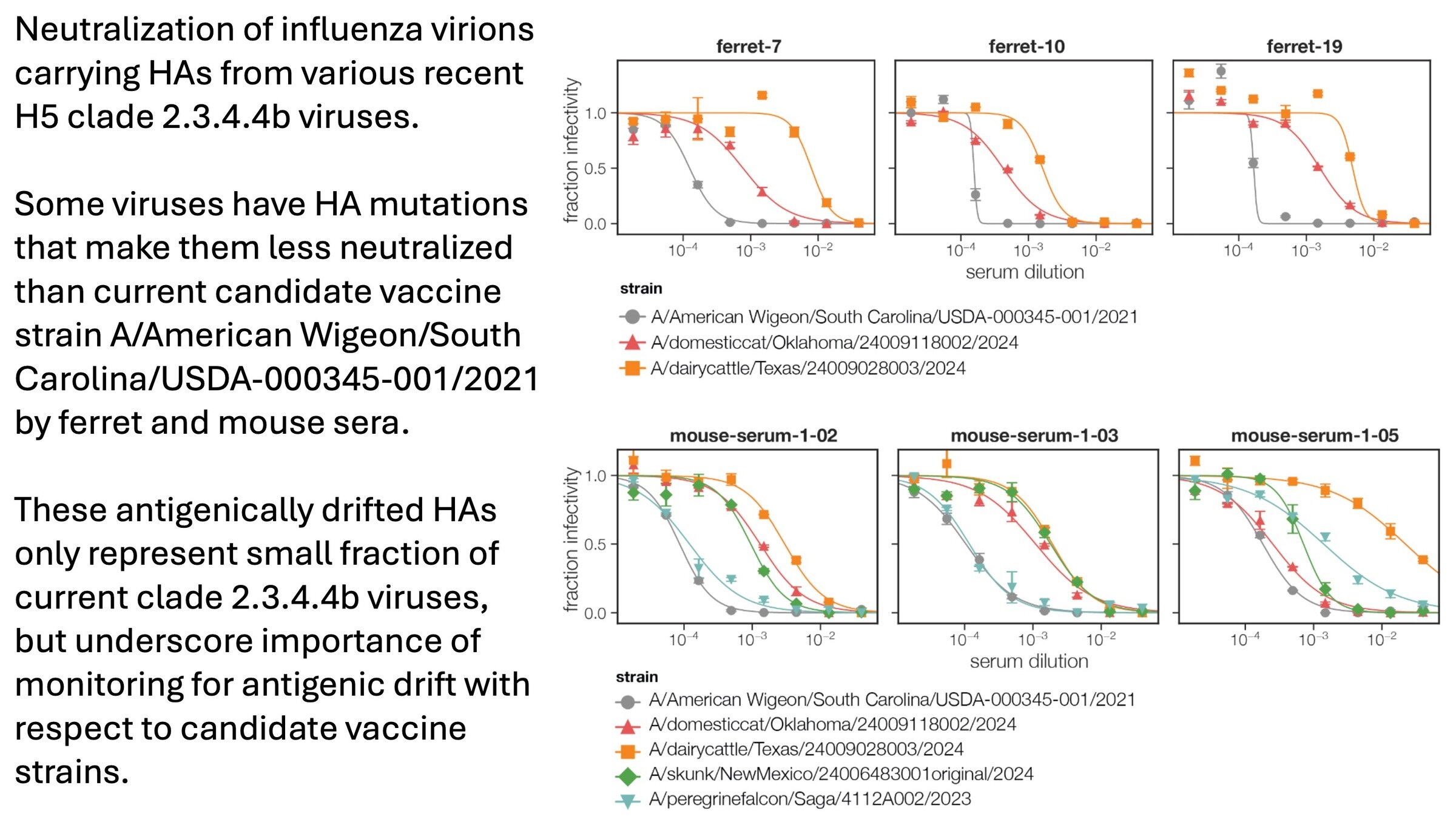
(L122Q, A160T, T199I)
(L122Q, P162Q, T199I)
Neutralization assays with influenza virions validate strong escape by A160T
Note that site 160 has been undergone repeated antigenic evolution in human seasonal H3N2 inlfuenza
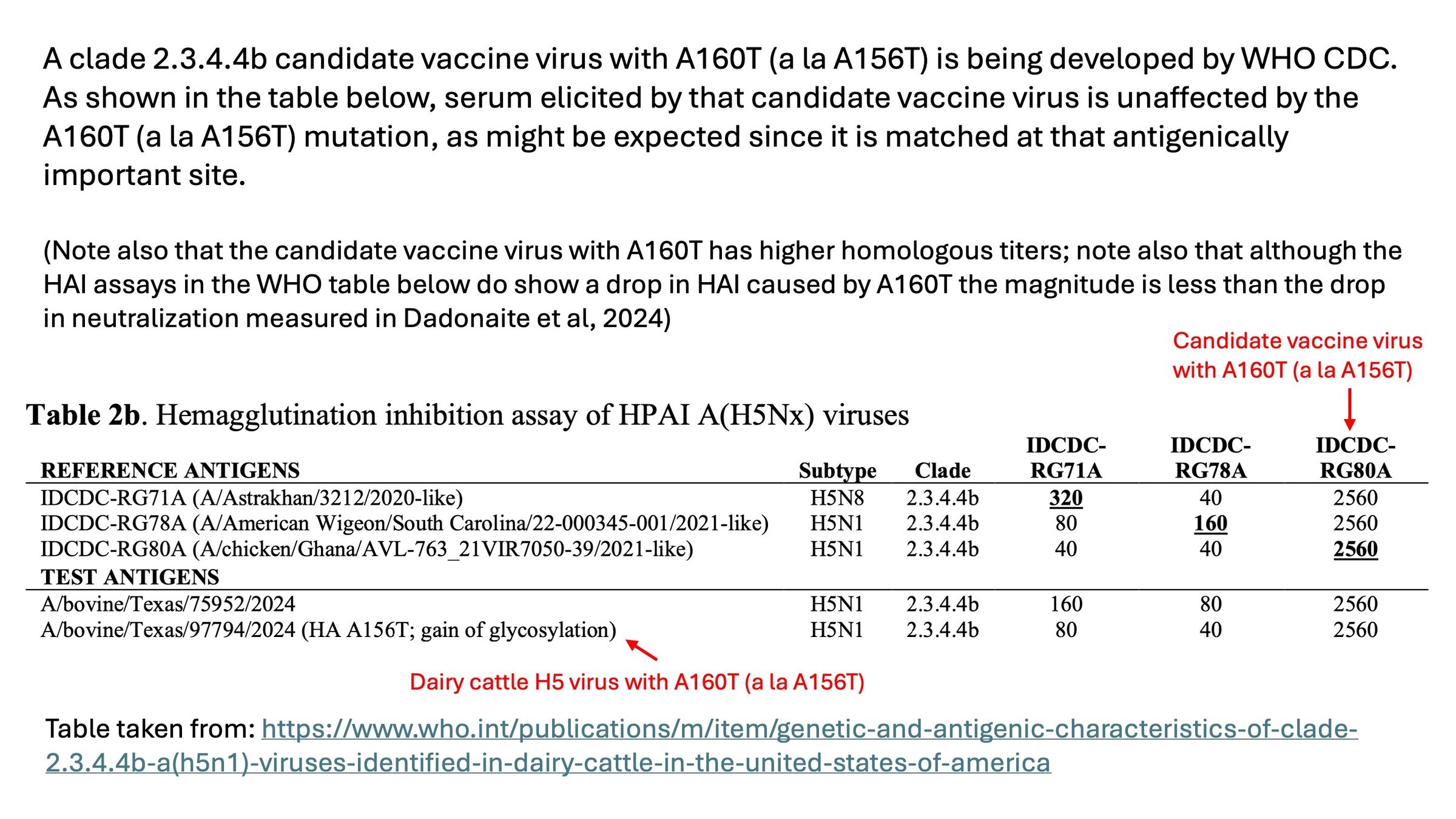
A clade 2.3.4.4b candidate vaccine virus with A160T (a la A156T) is being developed by WHO CDC. As shown in their data below, serum elicited by that candidate vaccine virus is unaffected by A160T as expected.
Going forward, it is important to try to ensure any vaccines that are being prepared are well matched to the various different antigenically somewhat variable H5 viruses that pose a risk.
P140S (a la P152S, P136S) found in only one sequenced cattle virus
